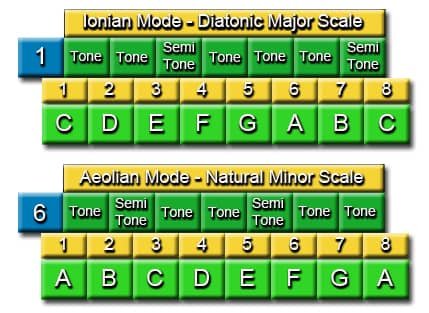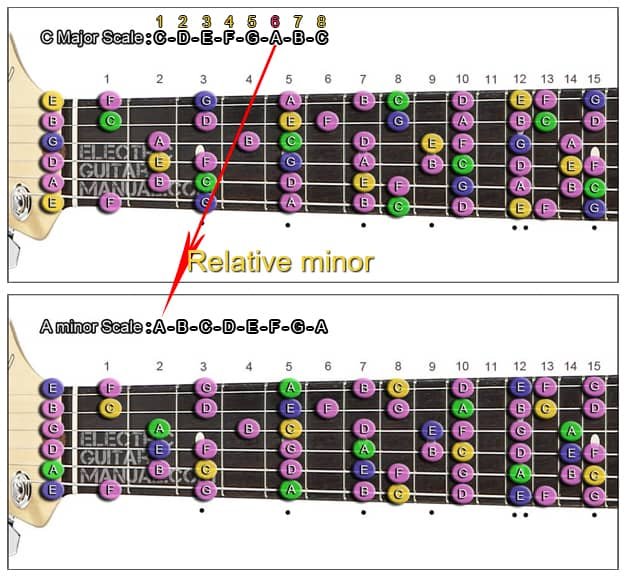On this page we address the topic of Relative Key or Relative Minor, how to locate or calculate the Relative Minor of a Key or Scale, and how to get the most out of this concept.
Each major key has a minor key composed of the same notes as its relative major, known as the relative minor key.
For example, the key of C Major consists of the same notes as the key of A minor.
Notes of the C Major Key and its Relative Minor A

But although both scales consist of the same notes, their tonalitys are different, since their intervals between the notes correspond to different keys.

To know what the relative minor scale or relative key of a major scale would be, we only have to look at the sixth degree of any major scale. And from that note we form a new scale.

For example, in the previously mentioned case of the C Major scale, its relative minor would be A minor, but in the rest of the scales exactly the same would happen. Since if we take, for example, the F Major scale, its sixth degree would indicate its relative minor, that is, D minor.
The F Major scale integrates a Bb in the fourth degree, as a variant respect to the C Major scale.

These concepts are very useful to know, especially when learning scales, since every minor scale consists of the same structure as its relative major and vice versa. It can be seen perfectly in the image below.

As you can see, it has the same structure, but with a different arrangement in its different degrees.
In short, if we know the structure of the major scale, without realizing it we will also have learned the basic structure of the minor scale.
Relative Keys: Two Scales but the same Structure
Very briefly explained, we can play a guitar solo in A minor using the C Major scale, but taking the note A as the Tonic and that’s it. We would already be playing in Key of A minor. Although this explanation is very basic, the main thing is to grasp the concept in a general way.
In the link below you have all the major scales in all keys, and their respective Relative minor.
